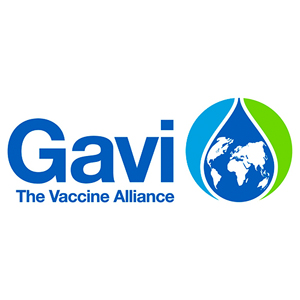Robin Nandy, Principal Advisor & Chief of Immunizations at UNICEF

In March, a child receives a dose of oral polio vaccine from a health worker in Baghdad’s Al-Takya Al-Kasnazaniya Camp for displaced Iraqi families. Photo: UNICEF/UN017005/Khuzaie.
In conflict-affected regions, children miss out on life-saving vaccines
Anyone with access to a TV, or even a smartphone has unlimited access to images of the destruction that armed conflict causes around the globe. We can see details of the ways war and violence threaten and disrupt children’s lives.
But conflict also attacks the systems that support the routines of daily life. Though rarely captured in news alerts, conflict also cripples health, nutrition, water, sanitation and hygiene services. Access to life-saving immunization too often is a casualty of the breakdown of these essential systems. The result is that, during conflict, millions of children miss out on the basic vaccines they need to stay healthy and have a fair chance in life. Most often the children affected are the most vulnerable to disease.
The start of World Immunization Week, observed this year from 24 to 30 April, offers an opportunity to shine a light on the children denied access to life-saving vaccines during times of conflict.
Immunization and conflict
Around the world, 18.7 million babies do not receive a complete set of basic vaccinations and are vulnerable to life-threatening diseases. An estimated 1.5 million of them will die in childhood of diseases that could have been easily and affordably prevented by vaccines.
All children, no matter where they live or what their circumstances are, have the right to survive and to thrive. Children affected by conflict are among the most likely to be denied this right. Almost two-thirds of all unvaccinated children live in conflict-affected countries.
Countries in conflict include South Sudan, where only 39 per cent of children receive basic childhood vaccines – the lowest vaccination rate of any country in the world. In Somalia, only 42 per cent of children are immunized and in Chad, 46 per cent.
In Syria, five years of conflict have taken a toll on immunization rates and put children’s health at risk. In 2010, before the conflict started, over 80 per cent of children were immunized. By 2014, immunization rates had plummeted to 43 per cent. As a result, polio resurfaced in the country in 2013 after 14 years with no cases.
Multiple dangers
Certainly conflict presents multiple dangers for children. These include overcrowding and limited access to basic services like food, water and shelter. But when dangers are compounded by a breakdown in health systems, children become particularly vulnerable to the very diseases that vaccinations can prevent. Take conflict-affected areas in Pakistan and Afghanistan. In these areas, polio still cripples children for life. The virus has been successfully eliminated in all other countries across the globe thanks to immunization.
Another danger is that children in conflict settings not only miss regular preventative services such as vaccines, they cannot be treated properly if they fall ill. In these circumstances, children are more likely to die or suffer complications from common childhood conditions that could be easily and inexpensively treated in a peaceful setting. As a result, measles, diarrhoea, respiratory infections, malaria and malnutrition are major causes of childhood illness and death in emergency settings. For example, in refugee camps, we have seen instances where up to 30 per cent of children infected with measles have died. In a peaceful setting with functioning health and immunization services only a fraction of measles affected children are at risk of death.
We also have to spare a thought for health workers and vaccinators whose lives are frequently at risk in these settings. Many are intentionally targeted and have lost their lives in recent years. A major part of our advocacy work at UNICEF is to advocate for safe passage and security for health workers as they carry out their responsibilities in these conflict affected communities.
An essential tool
Immunization saves up to 3 million lives a year.
Since 1990, it has been a major reason for the substantial drop in child mortality. Yet nearly one in five infants around the world– often the poorest and the most vulnerable – do not receive the vaccines they need to stay healthy and have a fair chance in life.
UNICEF knows first-hand how immunization campaigns in conflict-affected countries can stem the tide of disease. Despite fierce conflict in the north, vaccination campaigns have effectively stopped incidences of wild polio since 2014 in Nigeria, a country that accounted for half of all polio cases in 2012. In war-torn Yemen, UNICEF-supported vaccination campaigns immunized 2.4 million children against measles and rubella in January and 4.6 million children against polio in April 2016.
Children affected by conflict are pushed into a downward spiral of deprivation that robs them of their health and by extension, their futures. Vaccines can help to break this vicious cycle. In addition to protecting children from disease, the immunization supply chains, workforce and infrastructure that reach into to remote regions of the planet also have the potential to serve as a platform to deliver other health services and also build health systems.
With specific funding and international commitment to the safety of health workers, immunization programmes can save lives during conflict and help rebuild the systems that will protect children in the future.
This blog was originally posted on the UNICEF connect site.






